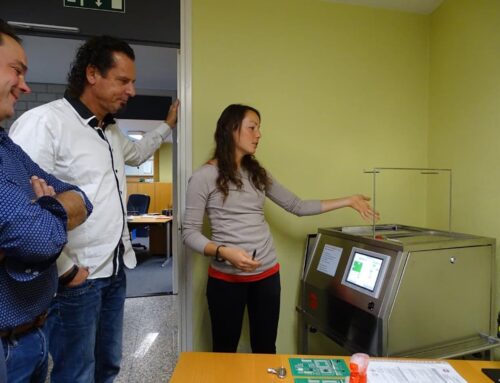This article will deal with developments in the field of cybercrime in the virtual world. When we talk about the virtual world, the term metaverse pops up fairly quickly. But what is this really, this metaverse? Metaverse is a new era of the Internet, linked to virtual reality headsets. Users often also have access to it by augmented reality. You actually see a digital world that is no less real than the real world. You can chill there, buy or sell articles there, play virtual games, follow classes, etc.
The real world is increasingly hit by cybercrime, and criminals have discovered the virtual world as an interesting playing field as well. In the virtual world crypto currencies are used for payment in quite a number of places, and these currencies are worth a lot in the real world. Hacking metaverse avatars is therefore a phenomenon that is on the rise. Hacking VR glasses or physical bodysuits allows criminals to get easy access to a person’s credit card details. A hack could also reveal strategic information of a company, or it could disrupt a company process. The hacking of a bodysuit grants the cybercriminal access to a vast range of data of its wearer. A person’s biometric data could also be stolen, causing unforeseeable damage, but also the hacking of speech-driven instructions of VR and AR headsets plays valuable information into the hands of criminals.
For the cybercriminal an attack on the metaverse of a company is a lucrative activity. Companies are hardly aware of what it is that cybercriminals can do. In the metaverse of a company there for instance customer data. Generally speaking, companies tend to have bigger budgets than private individuals, so there is a much more interesting catch for a cybercriminal when targeting the metaverse of a company, regardless of its size.
Terrorist groups also use the metaverse, and not just for recruitment purposes but also for spreading propaganda and fake news. In the meantime the metaverse has also evolved into a platform for money laundering schemes and people trafficking.
Law enforcement in the metaverse is still in its infancy, though there are numerous initiatives in which law enforcement is part of the structure of the metaverse. Interpol has a metaverse space for international law enforcement. Participants can do police training courses there. The Dutch, Norwegian and French national police have also discovered the metaverse and are active there. The Norwegian police are for instance active online on gaming and streaming platforms, while the French police have created a separate space in the online game Fortnite where children can go if they are faced with abuse or if they have a question.
There is even a virtual court in the metaverse, for the time being only for cybercriminals having a feud. They can put their dispute to an independent judge who passes judgement. The Minister of artificial intelligence of the United Arab Emirates has already stated that cybercriminals in cyberspace should be punished in the same way as criminals in the real world.
Before we reach the stage that the chance of being caught as a cybercriminal in cyberspace will be big, legislators will have to do everything in their power to make the chance of cybercriminals in the physical world being caught much bigger. This requires international cooperation, which may be more difficult than hoped, because it is not in every country’s interest to catch cybercriminals.










